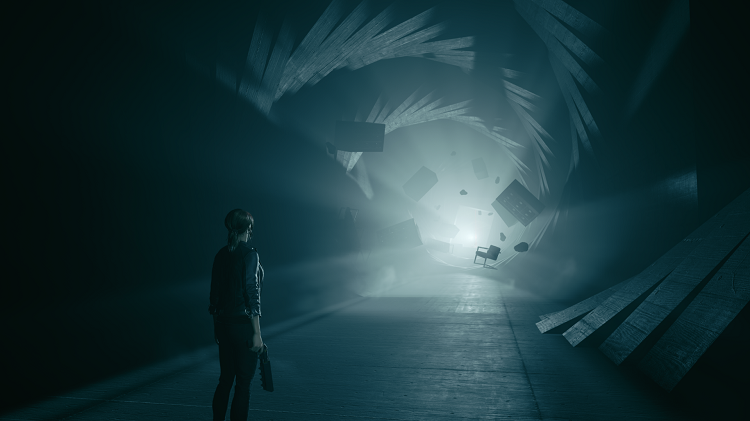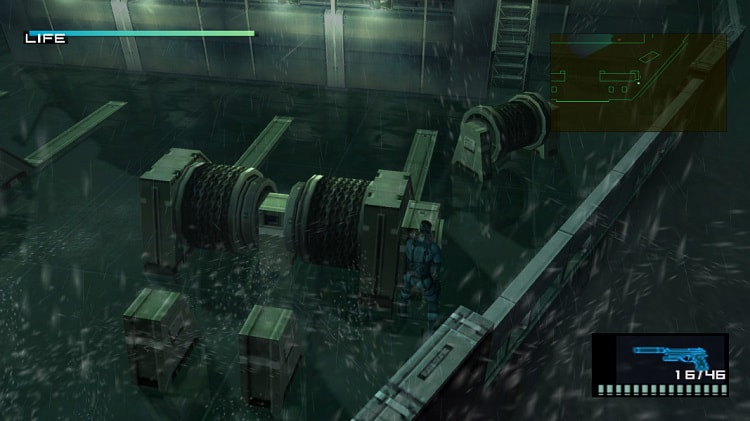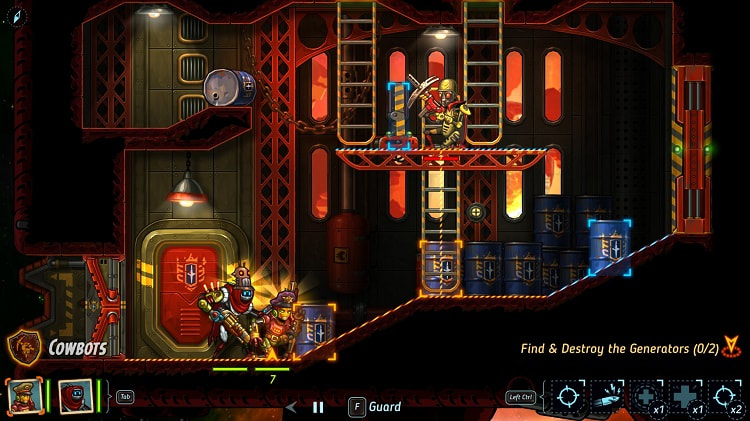|
For me, November has been a month of two halves - split between the time before my new PC arrived, and the time afterwards. Games I played in both phases are represented in this, my second monthly roundup. In the first half of the month I played stealth classic Metal Gear Solid 2 (2001) and the indie games SteamWorld Heist (2015) and Shadowrun: Dragonfall (2014). Equipped with a new PC, I revisited modern classic Doom (2016) and the visual treat that is Remedy’s third-person paranormal action game Control (2019).
Metal Gear Solid 2: Sons of Liberty (2001)
Developed by Konami Computer Entertainment Japan, published by Konami
In 2020, Konami finally decided to throw PC players a bone by re-releasing Hideo Kojima’s stealth classics Metal Gear Solid 1 and 2 through GOG. This prompted a lot of predictable grumbling about the barebones nature of the releases, but with Konami on the PC, you take what you can get. In fact, the games play just fine with a controller but while I enjoyed my revisit of the original earlier this year I was a bit less impressed by my first run of Metal Gear Solid 2. Despite the improved graphics and controversial switch of player character the sequel is largely a retread of the first game in a somewhat less interesting setting.
With that being said, MGS 2 has a number of ideas which still seem strangely fresh and daring even 20 years later. The game is also just, well, weird - you can slip to your death on bird poop, your controller rumbles when you get pissed on by a guard, and at one point you get sexually assaulted by the President of the United States. Perhaps Konami will see fit to release the even more self-indulgent weirdness of the third and fourth entries on PC. In the meantime, I also played Metal Gear Solid V: Ground Zeroes (2014) lately, and plan to tackle the main game soon.
Shadowrun: Dragonfall (2014)
Developed and published by Harebrained Schemes
Earlier in 2021 I played Shadowrun Returns, the hybrid fantasy-cyberpunk RPG developed by indie outfit Harebrained Schemes. Back in January, I wrote about how much I enjoyed the game and particularly how I appreciated its brevity and conciseness. This month, I got around to playing the second entry in the trilogy, Dragonfall. This posed an interesting question. Given how much I enjoyed how short the original is, how would I feel about a sequel I knew to be significantly longer? As it turns out, I liked Dragonfall even more than the first game, despite it being about 50% bigger.
Crucially, Dragonfall has great writing. Not only is the central plot of radioactive dragons and corporate conspiracies quite engaging, but the various supporting characters have surprising depth and responsiveness. I learned to my cost that it’s possible to wind up at least one of your companions so badly that he refuses to speak to you ever again. Compared with the slightly bland Seattle of the first game, the sequel is set in the altogether more intriguing Berlin. This switch of location pays dividends, as it offers up a more immersive cultural background than the birthplace of Starbucks.
SteamWorld Heist (2015)
Developed and published by Image & Form
The SteamWorld series is a real gem. Developed by Swedish indie studio Image & Form, it’s unusual in that it switches genre from game to game, while retaining a shared continuity and similar visual style. The first game was the modest but extremely well made 2D mining and action game SteamWorld Dig, released in 2013, but two years later the Swedes really stepped things up a gear with SteamWorld Heist, which focuses on turn-based tactics.
Taking command of a supremely likeable crew of steambot space pirates, Heist is all about docking with enemy ships to junk rival robots and snag as much swag as possible before making a getaway. Each mission plays out as a head-scratching tactical puzzle based on the familiar two-action model of XCOM. It is far more forgiving than Firaxis’ masterpieces, though. If a raid goes awry, you can always change up your team and go in for another attempt with a different approach. The graphics and writing are deeply charming, and there’s a surprising amount of depth in the campaign, which sees Captain Piper Faraday and crew take on rival pirates, an overbearing space monarchy, and eventually a high-tech threat that ties in with SteamWorld Dig.
Control (2019)
Developed by Remedy Entertainment, published by 505 Games
With their breakthrough game Max Payne back in 2001, the Finnish studio Remedy set out many of the key elements that would define them as a company. Their use of cutting-edge technology, the third-person perspective, lifelike settings, visceral combat and a sense of humour have served them well now for 20 years. With that being said, Remedy seemed to reach a whole new level with Control when it was released in 2019.
The game has all the classic Remedy elements, and nothing is groundbreaking about its gameplay, but Control feels fresher and more important than most games. Set in a labyrinthine, shifting, and seemingly endless structure called the Oldest House, the game focuses on protagonist Jesse Faden as she seeks out her missing brother and inadvertently becomes a recruit of the mysterious Federal Bureau of Control. Built on Remedy’s own Northlight engine, Control looks absolutely stunning and in its own way, is one of the most technically impressive games ever made - not least due to its exceptional reflections, lighting and particle effects. Neither the story nor gameplay are quite as compelling as the visuals, but Control is still a deeply engaging experience.
Doom (2016)
Developed by id Software, published by Bethesda
For years, id Software were leaders. With Wolfenstein 3D (1992) and particularly the original Doom (1993) they effectively invented the first-person shooter and most other games that followed looked like pale imitations. There’s a good reason why “Doom clone” was at one time a popular term. Then, Valve Software came seemingly out of nowhere in the late ‘90s, and id Software became followers instead, clearly no longer at the head of the pack. Their original plan for a new Doom game was heavily indebted to Call of Duty - had it seen the light of day, it might have finished them for good.
Fortunately, the studio saw the writing on the wall and made a radical course correction. Now five years old, the Doom they actually came up with is as beautiful, visceral and gripping as it was in 2016. The game is a fast-paced but thoughtful combination of elements both old and new; it has enormous guns that don’t need reloads but also has multiple surprisingly deep progression systems and a decidedly modern look. Crucially, the level design is excellent and the environments are varied, ranging from numerous labs on Mars to the wonderfully sinister bone-strewn locations in hell. I revisited the game mainly in preparation for Doom Eternal, but was reminded just how brilliant the first game still is. This may just be the game that saved id Software, and ushered in their second phase of greatness.
0 Comments
Your comment will be posted after it is approved.
Leave a Reply. |
About
Exploring classic science fiction, with a focus on the 1950s to the 1990s. Also contributing to Entertainium, where I regularly review new games. Categories
All
|






